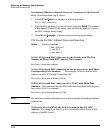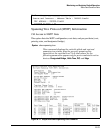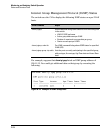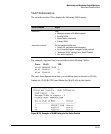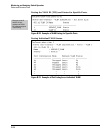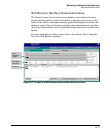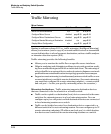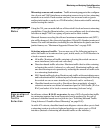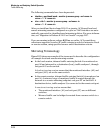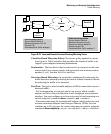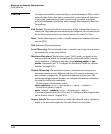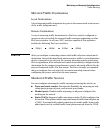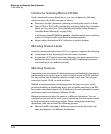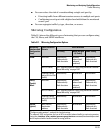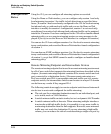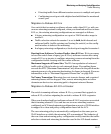
Monitoring and Analyzing Switch Operation
Traffic Mirroring
The following commands have been deprecated:
■ interface <port/trunk/mesh > monitor ip access-group <acl-name> in
mirror < 1 - 4 | name-str >
■ vlan < vid-# > monitor ip access-group <acl-name> in
mirror < 1 - 4 | name-str >
After you install and boot release K.14.01 or greater, ACL-based local and
remote mirroring sessions configured on a port or VLAN interface are auto-
matically converted to classifier-based mirroring policies. For more informa-
tion, see “Migration to Release K.14.01 or Greater” on page B-37.
If you are running software release K.13.xx or earlier, ACL permit/deny
criteria are supported to select IP traffic entering a switch to mirror in a local
or remote session, using specified source and/or destination criteria.
Mirroring Terminology
Figure B-23 shows an example of the terms used to describe the configuration
of a sample local and remote mirroring session:
■ In the local session, inbound traffic entering Switch A is monitored on
port A2 and mirrored to a destination (host), traffic analyzer 1, through
exit port A15 on the switch.
A local mirroring session means that the monitored interface (A2) and
exit port (A15) are on the same switch.
■ In the remote session, inbound traffic entering Switch A is monitored on
port A1. A mirrored copy of monitored traffic is routed through the
network to a remote mirroring endpoint: exit port B7 on Switch B. A
destination device, traffic analyzer 2, is connected to the remote exit port.
A remote mirroring session means that:
• The monitored interface (A1) and exit port (B7) are on different
switches.
• Mirrored traffic can be bridged or routed from a source switch to a
remote switch.
B-30



